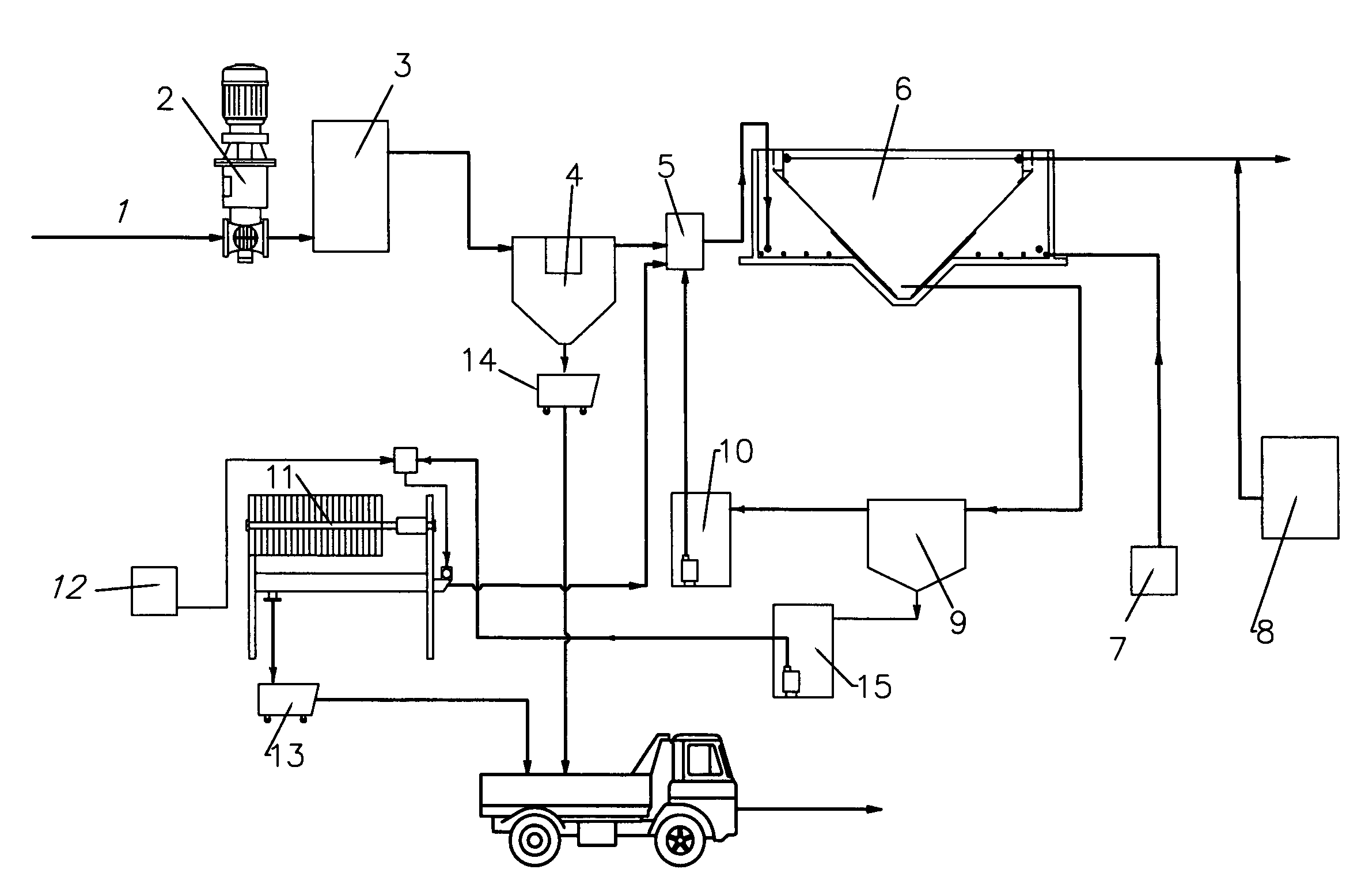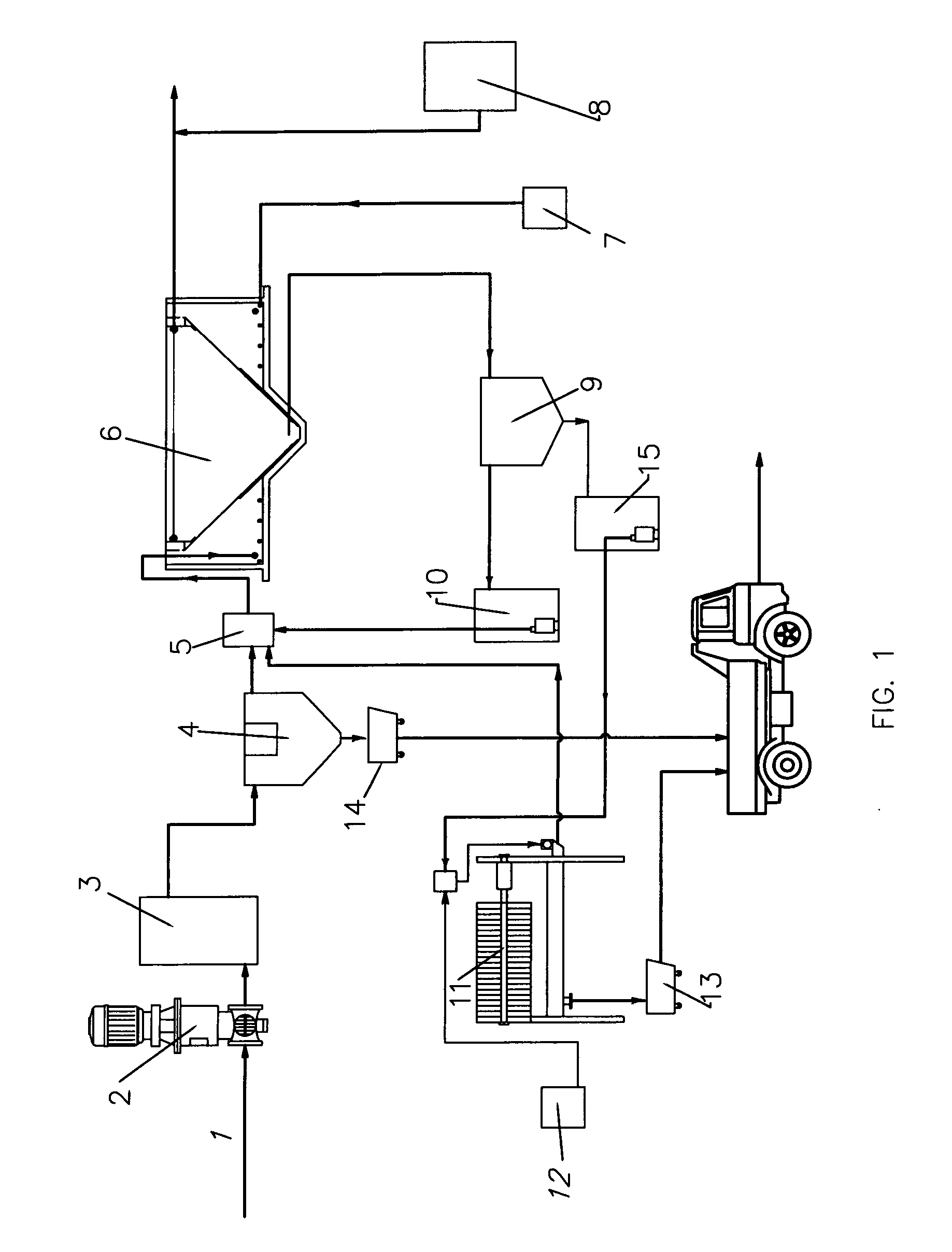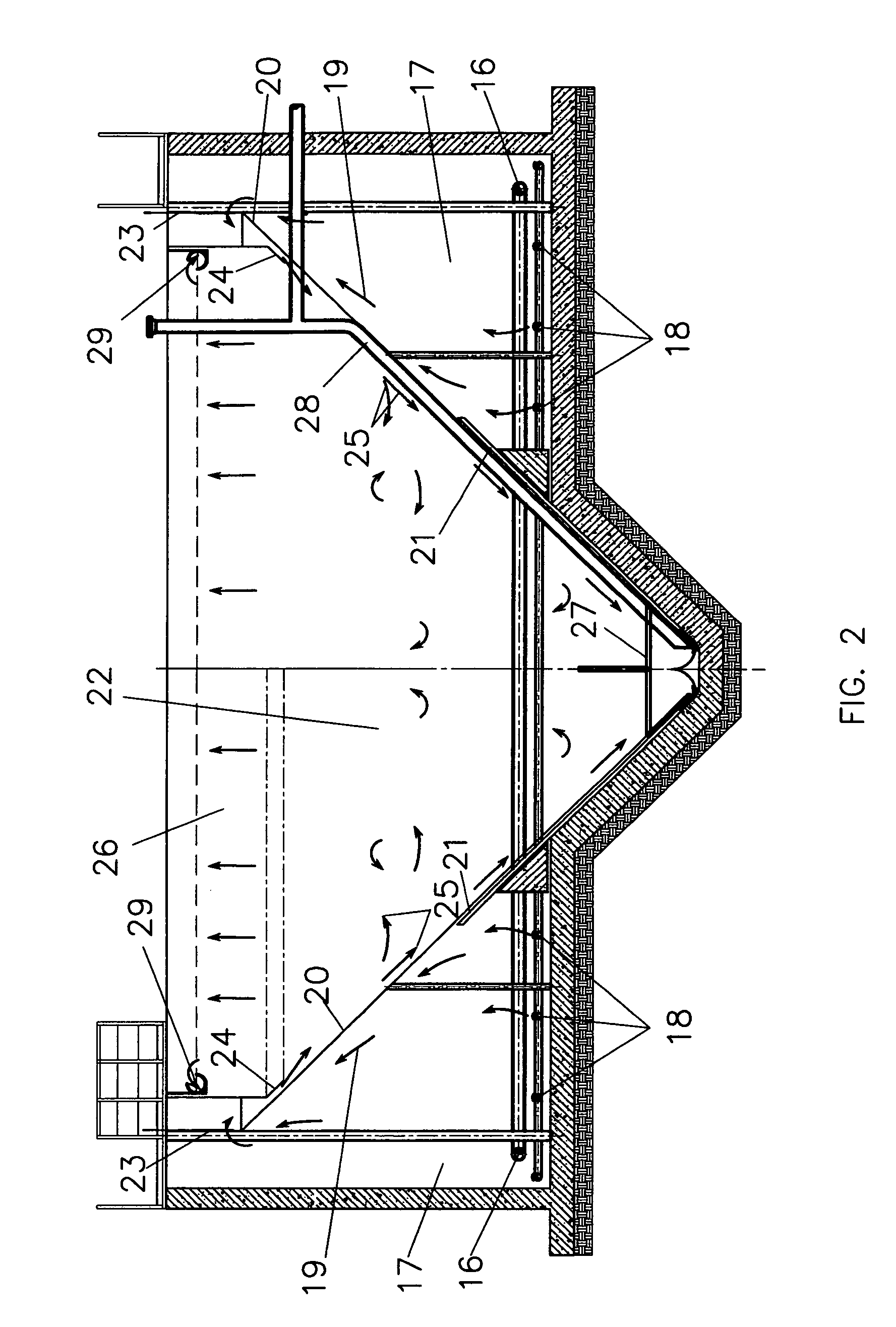Method and apparatus for activated sludge biological treatment of municipal and industrial waste water
a technology of activated sludge and biological treatment, which is applied in biological water/sewage treatment, filtration separation, and separation processes, etc., can solve the problems of low wastewater contaminant concentration, low flow fluctuation, and limited efficiency of suspended solid sedimentation, so as to reduce energy consumption and maintain high reaction mass concentration
- Summary
- Abstract
- Description
- Claims
- Application Information
AI Technical Summary
Benefits of technology
Problems solved by technology
Method used
Image
Examples
example
[0038]A modular wastewater treatment unit suitable for municipal use was constructed in western Asia. The treatment efficiency was tested by determining operational data. The average MLSS concentration during an operational period of 16 months was 5,125 mg / L. The major treatment process characteristics during the final 20 days in the 16th month are set forth below.
[0039]The operational data below show complete oxidation of ammonia to nitrates in course of the nitrification process which was achieved due to the high MLSS concentration, i.e. at low BOD removal rates, as designed.
PUM
| Property | Measurement | Unit |
|---|---|---|
| particle size | aaaaa | aaaaa |
| particle size | aaaaa | aaaaa |
| temperatures | aaaaa | aaaaa |
Abstract
Description
Claims
Application Information
 Login to View More
Login to View More - R&D
- Intellectual Property
- Life Sciences
- Materials
- Tech Scout
- Unparalleled Data Quality
- Higher Quality Content
- 60% Fewer Hallucinations
Browse by: Latest US Patents, China's latest patents, Technical Efficacy Thesaurus, Application Domain, Technology Topic, Popular Technical Reports.
© 2025 PatSnap. All rights reserved.Legal|Privacy policy|Modern Slavery Act Transparency Statement|Sitemap|About US| Contact US: help@patsnap.com



